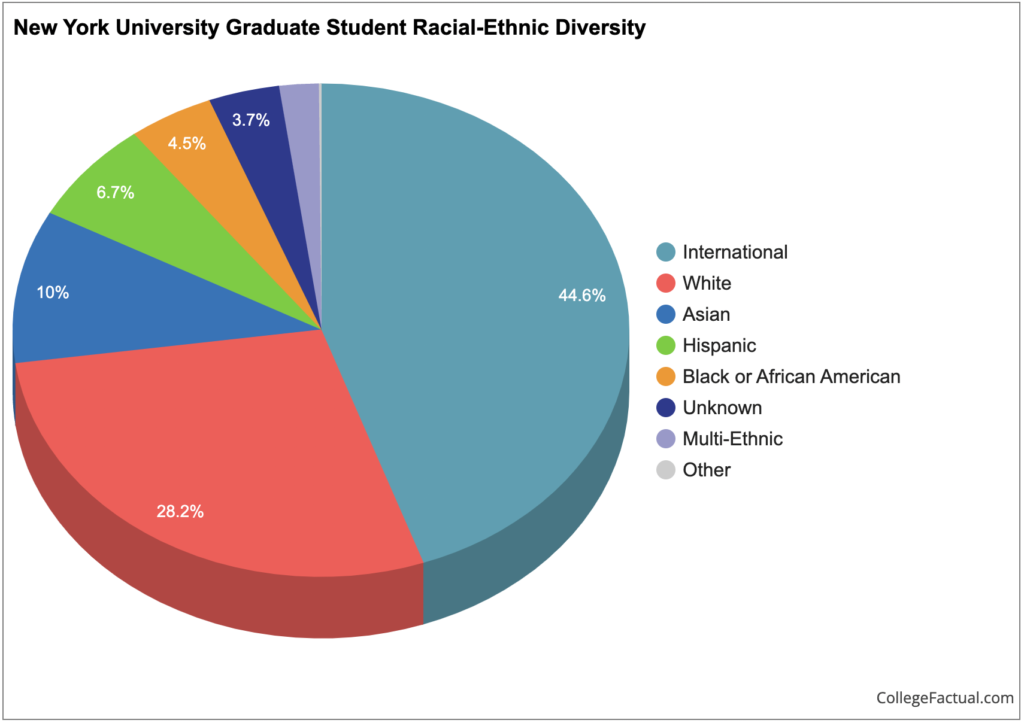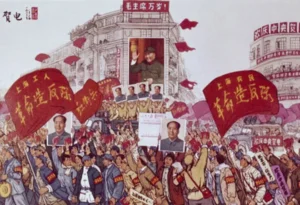Emerging Conversations on Anti-Asian Hate Crimes and the Legalities Behind Them
On Sept. 29, the US-Asia Law Institute at NYU Law invited attorneys Jennifer Wu (NYU Law, 2004) and Lawrence Wee (Harvard Law, 1994) from the Paul Weiss Law firm to discuss anti-Asian hate crime. Wu and Wee spoke on the difficulty of prosecuting hate crimes through the nature of collecting evidence, and why the community response, both digital and protest advocacy, should be made first and foremost with the voice of the victims in mind. In a city-campus where students are already cautious of daily safety, the rise in hate crimes and the deaths of young professionals alarmed safety concerns and brought forward attention and support for the Asian American and Pacific Islanders (AAPI) community.

Image Credit: Timothy A Clary/AFP/Getty Images
On Sept. 29, the US-Asia Law Institute at NYU Law invited attorneys Jennifer Wu (NYU Law, 2004) and Lawrence Wee (Harvard Law, 1994) from the Paul Weiss Law firm to discuss anti-Asian hate crimes. Wu and Wee spoke on the difficulty of prosecuting hate crimes through the nature of collecting evidence, and why the community response, both digital and protest advocacy, should be made first and foremost with the voice of the victims in mind. In a city campus where students are already cautious of daily safety, the rise in hate crimes and the deaths of young professionals alarmed safety concerns and brought forward attention and support for the Asian American and Pacific Islanders (AAPI) community.
Last year we saw a rise in anti-Asian hate crimes in New York City where annual cases increased from 30 to 133. Several famous instances occurred including the Michelle Go, 40, subway pushing case; the GuiYing Ma, 62, street attack; and Christina Yuna Lee, 35, apartment stabbing. With such a tremendous increase, communities of all ethnicities united in solidarity across the city.
Over the course of the pandemic, the rise in the severity of hate crimes is due to a feeling of collective blame on a certain group of people. Where the “hate” action used to be intimidation, racial comments, harassment, or something of the sort, the action has escalated to attacking someone with a rock, pushing them into the subway, or shooting them with a gun. The feeling of collective blame created by the rhetoric of Covid has given people “a license to go out and do violent things to people I (they) think are responsible for [this],” Wee says.
This issue has propagated through the NYU community, a student body that is composed of approximately 45 percent Asian or international students enrolled in undergraduate degrees, 54 percent Asian or international students in full-time graduate degrees, and over 16 percent Asian members in faculty.
Barbie Kim, an international master’s student in the Institute of Fine Arts at NYU (2023), describes how fear of anti-Asian hate crimes can influence how students see race and identity. “It physiologically affects me in how I see race, and how I choose to reveal my body. I am a single POC (person of color), [a]woman who [can be]on the streets very late, and it does have an impact on me,” Kim said. She states that she has also been the target of hate speech and harassment. A woman approached her and several others, and began yelling racial slurs at all the East Asians standing on the street. Afterward, “she followed me for a block and was trying to shove her phone in my face to record me.” She explains that the sights of homelessness and overdose in the transportation system are not what bothers her. “That alone has never made me feel unsafe. For me, it’s the amount of staring I get,” said Kim.
For Kim and many students at NYU, these situations come unexpectedly, but they can happen at any time in the city. In the past year, bystanders began increasingly recording racial assaults and uploading them to social media spaces to advocate against Asian and other racial hate crimes. Individuals utilize social media as a safe space for sharing their experiences and have built communities to support Asian organizations standing in solidarity against anti-Asian hate crimes.
The Difficulties of Prosecuting Hate Crime
Proving a hate crime is extremely difficult; how do you know when something is a hate crime or if the legality is less definitive and the crime lands somewhere in between? For Wu, proving why someone hates someone is as obscure as proving why someone loves someone. She says, “When you ask someone why do you love your mom, I don’t think you can say [that]it’s because she’s a woman, or because she looks like me, or because she’s a good cook. There’s no singular motivation for [the]human emotion of love; there’s also no singular motivation, I believe, for hate. And because the law is written in a way that requires a singular motivation, at least in New York and California… it’s incredibly difficult to prove a hate crime.”
The law states that hate must be a substantial or whole part of the motivation to be a hate crime. This is a narrow way of defining hate crime, which requires substantial evidence to prove intent. “There are actually pieces of the law that need to be changed,” Wee said.
Earlier this year, Michelle Go was pushed in the Times Square subway station in front of a moving train and died instantly. Go was a person many students at NYU could identify with. She was a young professional working as a consultant for Deloitte. She was not much older than a graduate or law student on campus. Wu described Michelle Go as, “a very bright woman, very connected to her community, was a volunteer for homeless people. She was not somebody who was an illegal immigrant. She was not somebody who existed on the fringes of society.”
The man who pushed her was identified as Martial Simon, 61. He was found mentally unfit to stand for trial. Simon was a homeless man who had been in and out of the mental healthcare system and the justice institution for years after being diagnosed with schizophrenia in his 30s. He immigrated from Haiti at 13 and lived a relatively normal life with his family until he became mentally ill.
Wee states that when the people who tend to commit these kinds of crimes are on the fringes of society, they may not have a Facebook page, or manifestos on their website, for example, that leaves traces of an evident hate crime.
The Paul Weiss Law Firm represented Ms. Go and her family. Both attorneys explained that the case did not offer any solid identifying features of a racially targeted hate crime, and there was no evidence that could prove to a jury that Simon would have been guilty beyond any reasonable doubt.
“There was no indication this guy ever said anything to [Go]. He didn’t say, ‘I hate you because you’re Asian,’ or ‘I’m gonna go hit an Asian woman.’ He simply just pushed her. And where there’s a lack of evidence, you have to assume that in a criminal trial, the jury may not find that they’re guilty beyond a reasonable doubt,” Wu said. Under these circumstances, many attorneys choose not to go for the hate crime charge, because it’s only a penalty enhancement and not the defining factor that puts someone away.
In Ms. Go’s case, the police have also said there is no evidence that her attack was racially motivated. According to Wu, “the district attorneys, by and large, would prosecute as a hate crime if they thought they had the evidence to prove it. But a lot of these kinds of attacks on Asian American and Asians are done without any talking or speaking.”
Attorneys recognize that each client has a different need. While some clients want to prosecute as a hate crime and garner publicity for the cause, other clients may want comfort and security, safety, or simply reclaiming their loved one’s lost possessions. Ms. Go’s family was most concerned about retrieving their daughter’s belongings from her apartment, which had been sealed after her death without an estate will. They also wanted the earrings she lost when she was pushed, “they may be in the subway somewhere, who knows,” said Wu. Because Ms. Go was an avid volunteer and advocate in the homeless and mentally ill community, her family recognized that and wanted Simon to receive the help he needed.
In his adult life, Simon had been hospitalized at least 20 times and had a history of police arrest. Until the Go case, Simon had never been reported as being violent or aggressive by those in the homeless care system who knew him. The New York Times reported that Simon’s conviction led to criticism of NYC’s failing healthcare system, which released Simon from the hospital after he was diagnosed as mentally unstable and not ready to take to the streets.
Standing in Solidarity in the Name of the Victim
In most instances, the media’s first question to the prosecution is: was it a hate crime?
The bulk of the conversation can sometimes focus heavily on the defendant, but it’s important we are considering the victim’s point of view. “Very few people want to hear from the victim, like how do you feel? Are you okay?” said Wu. The media, and its audience by extension talk so much about the defendant – what they believe and thought in why they committed the crime – that the voice of the victims gets lost.
The way community response played out in the Go case, unfortunately, hurt the victim more than helped, because it did not take into consideration the victim and their family’s perspective. The large rally in Times Square, put together by Asian American supporters, used Michelle Go’s image and her face to advocate against hate crimes, but the family was not informed, and they were not sure that it had been a hate crime. At the time, there was no evidence to prove it. The family was still working with the district attorney and had met with the mayor and other people in power, but none of them had any evidence.
In conjunction, since Go had volunteered for the mentally ill and homeless, the family didn’t necessarily want her case to be perceived as a hate crime. “There was a real divide in the community between Asian community organizations that were so keen on announcing this as a hate crime, ‘Asians are being hated, and that’s why they’re being killed.’ Even though from a legal standpoint, it wasn’t being prosecuted as a hate crime. And the family felt that [the response]actually victimized them further by taking advantage of their grief,” Wu said.
For this reason, it is even more important to be aware of the victim’s point of view, in order to be sensitive to “the whole victim, and the whole family, so … this is caring about the whole human being. This is caring about all of the needs of the person,” Wee said.
Sometimes the good of the community may depend on the crime’s prosecution. In particularly pernicious cases, the community reasoning is an important one because a hate crime against one is a crime against the community, and the prosecution can legally enhance the penalty to deter future hate crimes. Wu says, “We’ve determined that certain kinds of crimes like cross burning, attacking synagogues, attacking Black churches… that certain kinds of crimes are so pernicious that an attack on one is an attack on all.” For these types of hate crimes, if attorneys can enhance the penalty, it would benefit everyone. However, over the years penalty enhancements have lost their effectiveness in deterring hate crimes.
In the past year, society has seen a rise in diverse voices joining the conversation in solidarity against anti-Asian hate crimes. This includes larger government actors, Congress representatives, and organizations to smaller student groups and individuals. Online and social media advocacy has increased, among which several GoFundMe’s were created to support anti-Asian hate crime victims. In May 2022, the White House invited BTS – a popular Korean-pop group – to speak on anti-Asian hate crime. Congress leaders such as Grace Meng (6th District of New York) stood in solidarity with the community. The Asian American Bar Association of New York (AABANY) created the Hate Eradication Action Response Team (HEART), for students and individuals in the community to volunteer and work on hate crime cases pro bono. Anyone can work on the cases – you don’t have to be a lawyer – just as anyone can join the conversation in solidarity with the community.
Through these conversations, it is important to remember the victim’s point of view to create sustainable solutions that work. Our current legal system is set up to be an adversarial system. There are plaintiffs and defendants. There are victims and perpetrators. However, Wu says, “Not all our victims believe that it’s adversaré, they believe that society is broken in a way that we all need to be part of the solution.”
Betty Lincoln (she/her) is a second-year NYU MA International Relations candidate. Her research focuses on security and economics in the Asia-Pacific. She obtained a B.A. in International Relations with a minor in Asian Studies from the University of San Diego. Currently, she is pursuing a one-year Pathways internship in legal compliance and civil justice at the US Department of Labor. Betty enjoys diplomatic work involving governments and private corporations, and she aims to apply her experience in risk management and corporate government affairs. In her free time, you can find her walking her greyhound around NYC, playing tennis, or running along the Hudson.






